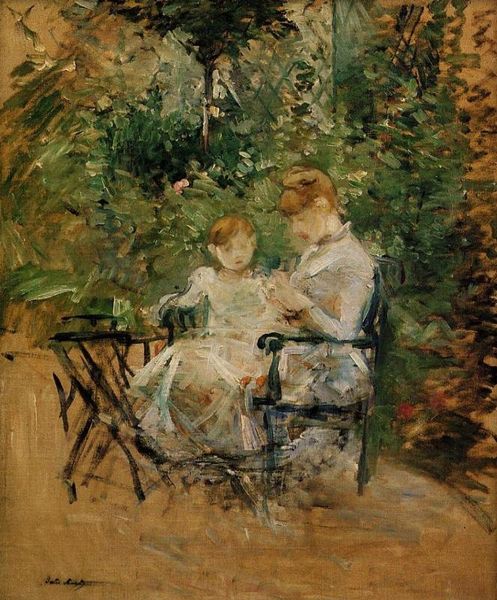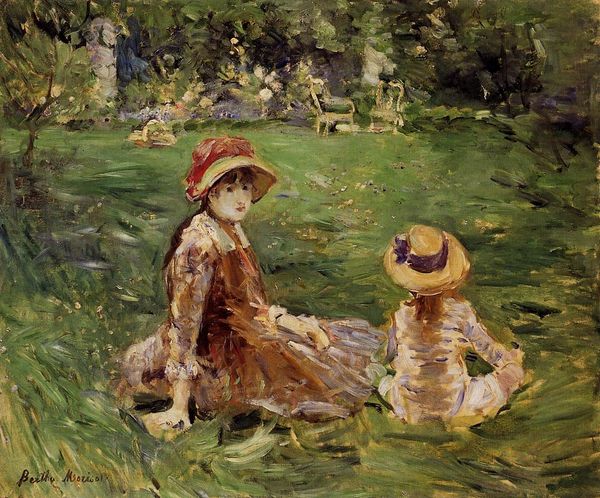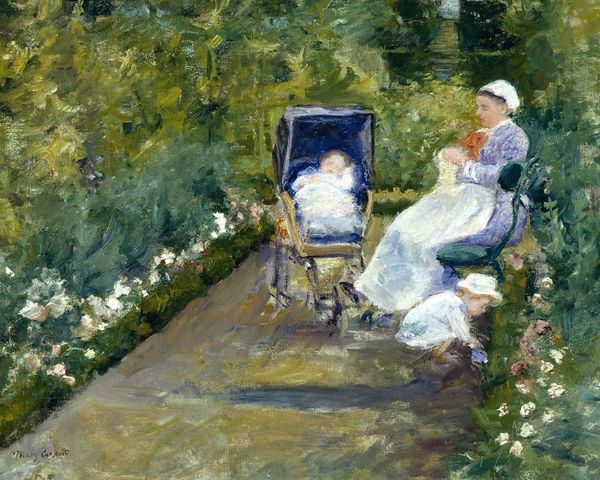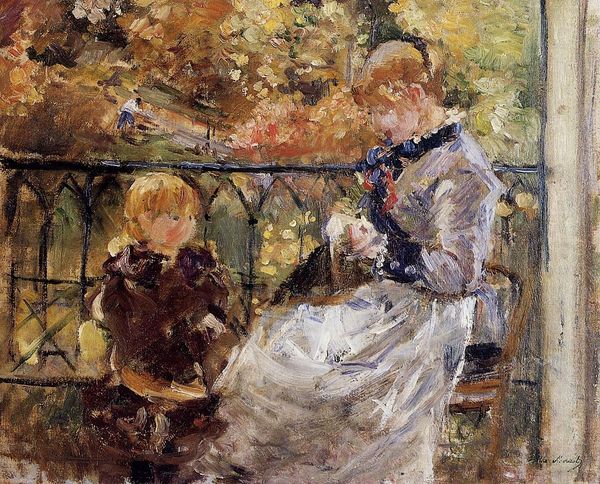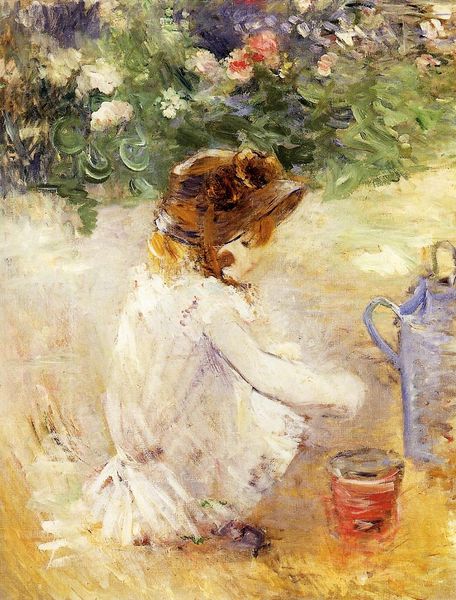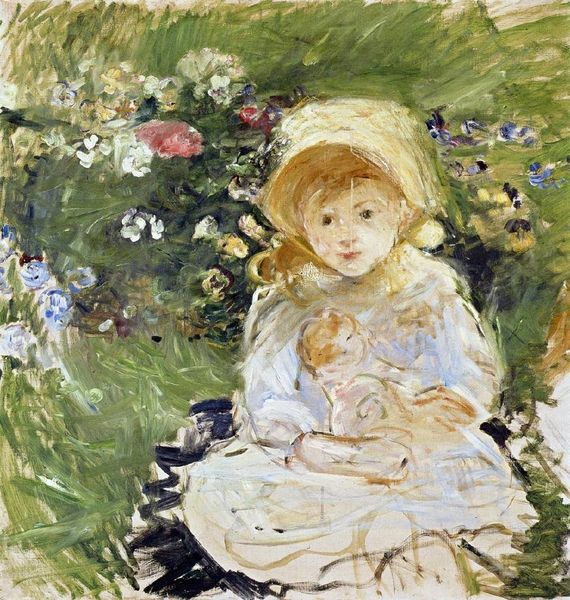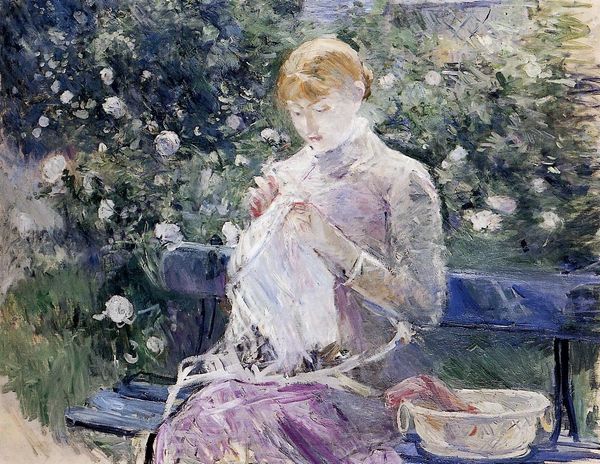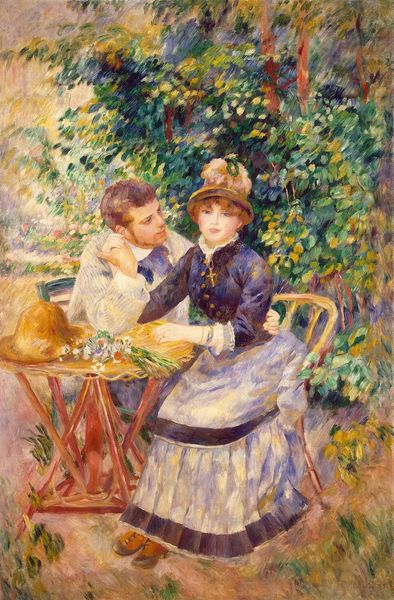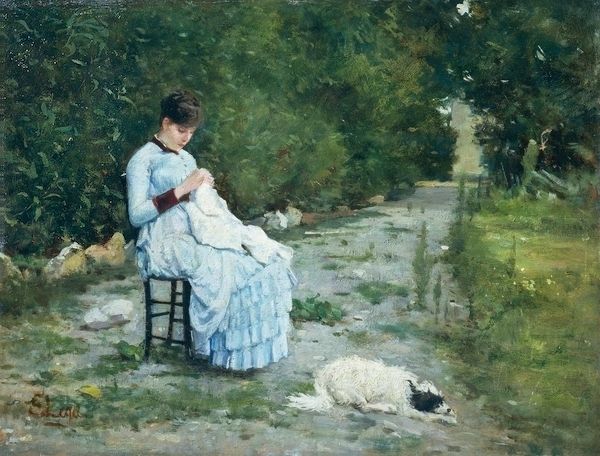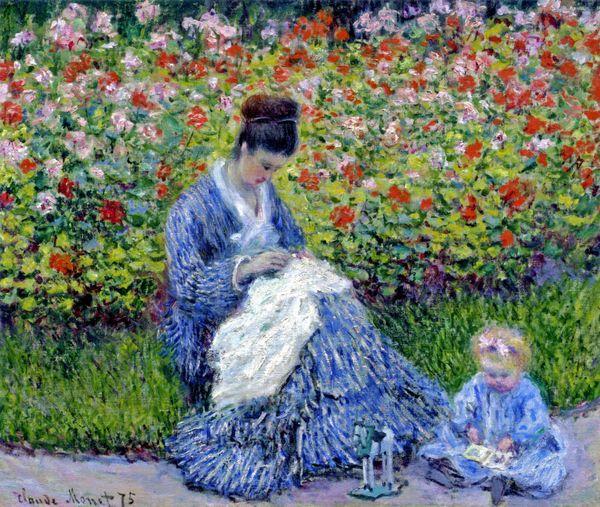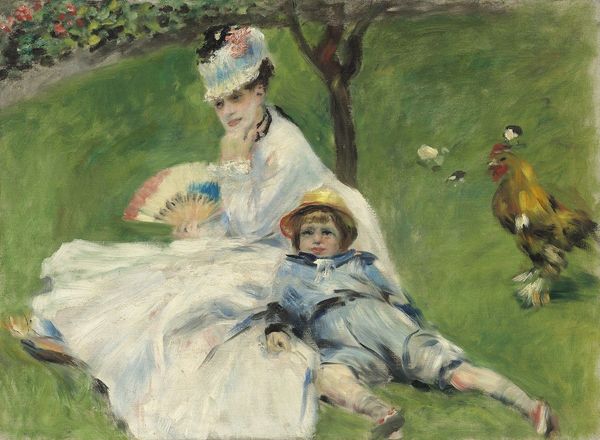
Copyright: Public domain
Curator: This is Berthe Morisot's painting, "The Fable," painted in 1883. Morisot, of course, was a leading figure in the Impressionist movement, and this painting really embodies many of its core characteristics. Editor: My first impression is a feeling of hazy serenity, like a half-remembered dream from childhood summers. The colours are soft, the edges blurred… it invites you to sink into the stillness of the moment. Curator: That dream-like quality is so characteristic of Impressionism, a focus on capturing fleeting impressions of light and atmosphere, and it also is rooted in the representation of women and domestic scenes from a female perspective in a very patriarchal time for art and the art market. Morisot here uses loose brushstrokes, particularly in the foliage and the girls’ clothing. Editor: I find the composition interesting. The positioning of the figures almost creates a narrative in itself. The older girl seems lost in her thoughts while the younger one remains deeply interested in telling a story... and look how this narrative connects to women in a confined domestic space. Curator: Yes, the space is so important here, isn’t it? Considering the history of women and painting, what do you notice about how Morisot uses the colors to depict them and place them into society? I would suggest there is so much to read here, given that Morisot worked in a historical period of strict segregation. Editor: Right. Colors in the young girl's pink clothes feel softer and carefree, and in the lady we observe a limited colour scale in comparison... This evokes something about transition, doesn’t it? In terms of composition, I see also how the painting captures a tender moment. The women's clothes are painted to indicate their feelings. Curator: Precisely! What also comes to mind here, the “unfinished” quality, so striking, goes beyond simply capturing a quick impression, I feel it asks the viewer to really engage, to almost complete the narrative, and also complete the status quo! This creates an interactive dynamic. Editor: Well said! For me, contemplating this work reminds us about memory and storytelling within the limitations of the time period and context. Also, that Morisot shows the woman with such attention means that it is possible to interpret symbols of social change and social transition with care and a feminist consciousness. Curator: Agreed. "The Fable" is more than just a beautiful impression; it is a quiet but powerful meditation on women, family, and inner life. Editor: Exactly! I can observe the social reflection and its relation with storytelling by Berthe Morisot and all things change, as the saying goes.
Comments
No comments
Be the first to comment and join the conversation on the ultimate creative platform.
